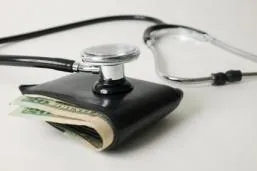
Will the pay-ins and payouts in the 3Rs be enough to leave insurers, and the programs, whole? Early data is offering a window into the possible dynamics.
A new study by the managed care team at Citi Research may leave investors, budget hawks and insurers alike with alternating senses of security and concern for the first year of the Affordable Care Act's health plan risk-sharing, reinsurance, risk corridor, and risk adjustment programs.
Citi Research analysts Carl McDonald and Sahil Choudhry examined the 3Rs assumptions of insurers -- their expectations for either receiving adjustments or paying out surpluses based on member risk and claims -- for 85 health plans with 13 million individual lives, approximately 80 percent of the total individual market.
In the first half of 2014, based on those assumptions, the plans are set to receive $45 million in risk adjustment payments, $408 million in risk corridor payments and $1.2 billion in reinsurance payments, according to McDonald and Choudhry's analysis.
The industry is still perhaps a bit too optimistic, they argue.
After the first quarter of 2014, many insurers were expecting to receive risk adjustment payments and few were expecting to actually pay, as part of the ACA's permanent program accounting for sickness and health in membership.
Now, that has changed, as some insurers have disclosed the likelihood of making payments based on healthy membership (primarily the Blue Cross plans that, with some exceptions, flooded many state exchanges).
"There are still lots of insurers making no assumption on risk adjustment," McDonald and Choudhry write. And for risk corridors, the three-year program limiting losses and profits, large receivable assumptions are making the two analysts nervous.
"With no change in assumptions, we estimate the full year liability to HHS could exceed $1 billion," they write. "There won't be nearly enough plan contributions to fund these requests (just one plan in our sample recorded a risk corridor payable, and it was for only $2 million), and what could soon be a Republican controlled Congress isn't likely to appropriate additional funds. HHS intends to use 2015 risk corridor collections to fund any 2014 shortfalls, but it isn't clear to us why health plans will suddenly start earning excess individual profits in 2015."
Meanwhile, the trajectory of the three-year reinsurance program should be a "potential source of upside."
While the first half of 2014's expectations for payment receivables are approaching $2 billion and expected to grow, they're still likely to fall short of the $10 billion total reinsurance pool, giving HHS "the option of making the reinsurance terms favorable for the industry," McDonald and Choudhry add.
Their data only covers the first half of the year, however; another six months remain to be accounted for. Plus, a number of insurers have yet to even make assumptions about risk adjustment -- understandably.
Insurers may have a grasp of their own membership's health risks, but "they don't necessarily know how that compares versus their individual competitors in the state," McDonald and Choudhry note.
Also, since many plans added individual membership with April 1 and May 1 effective dates, there are a good deal of members whose status won't be known until later in the year anyway.